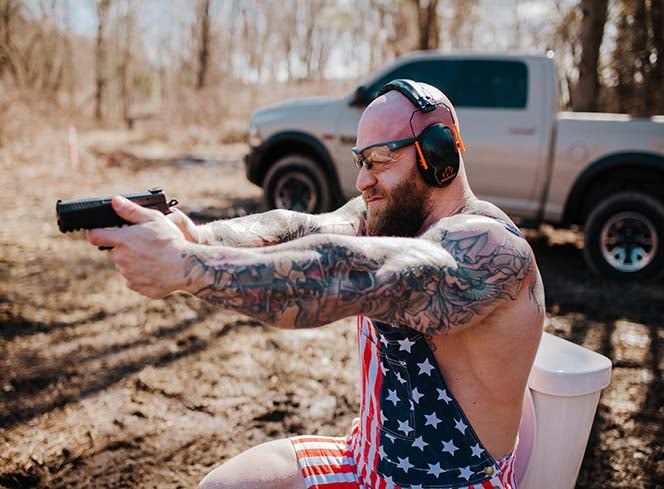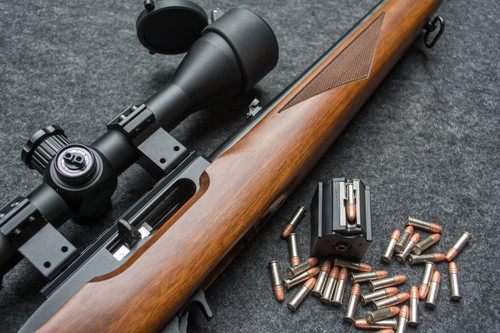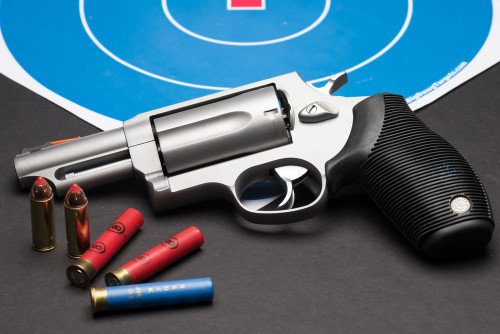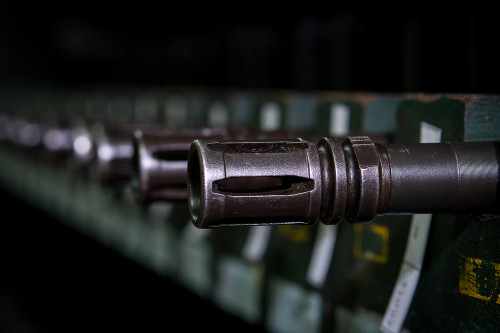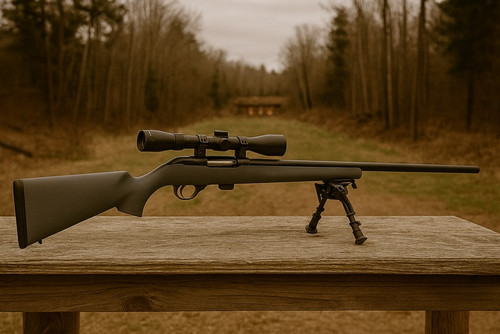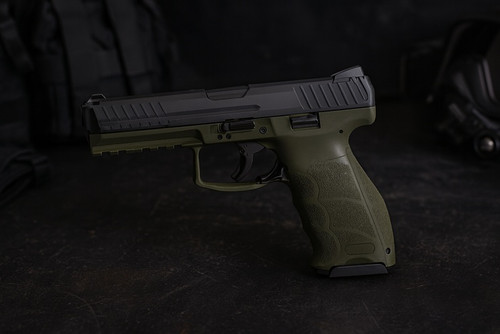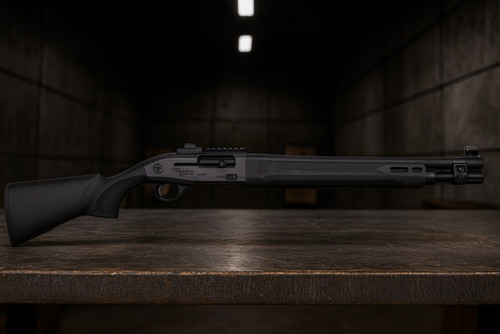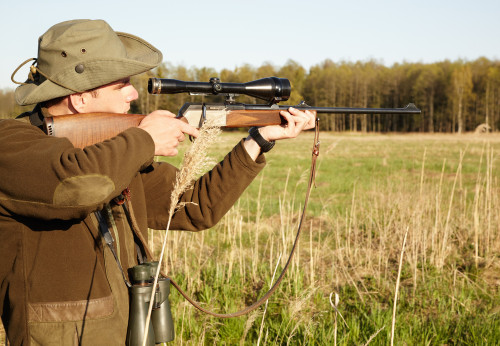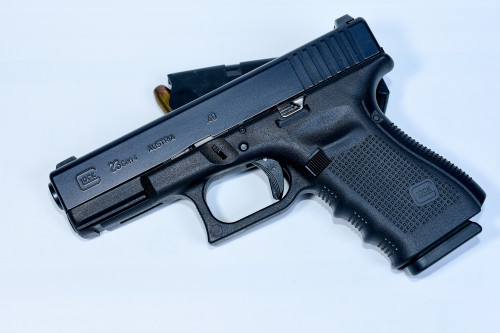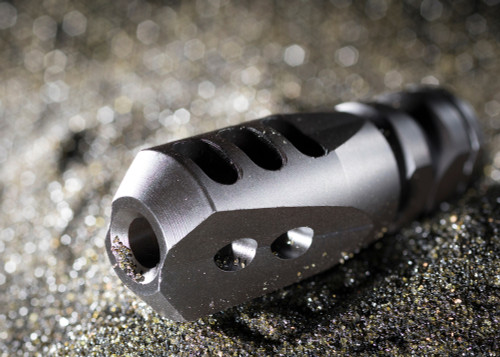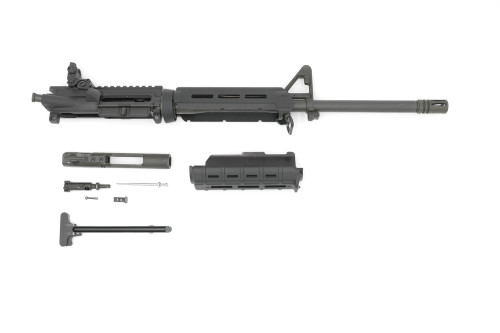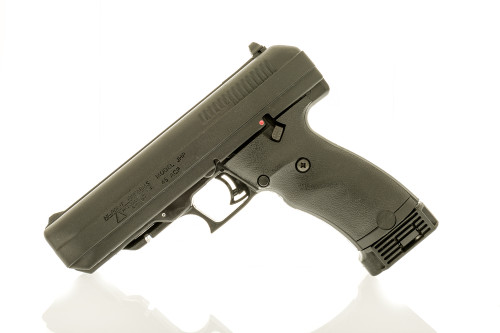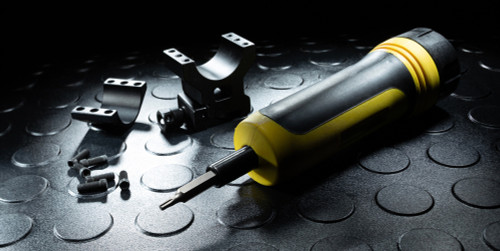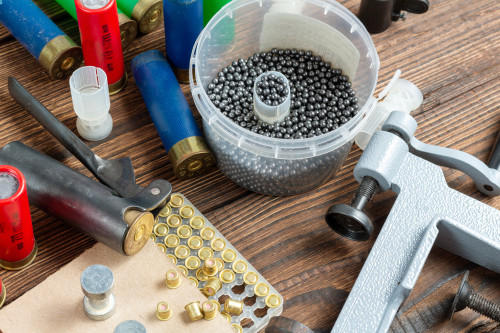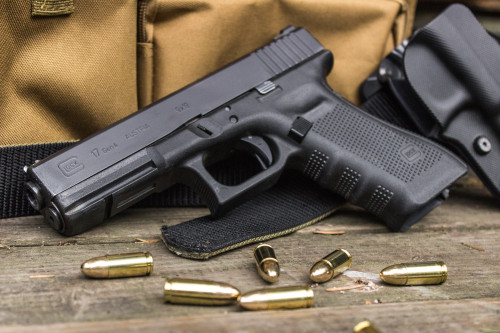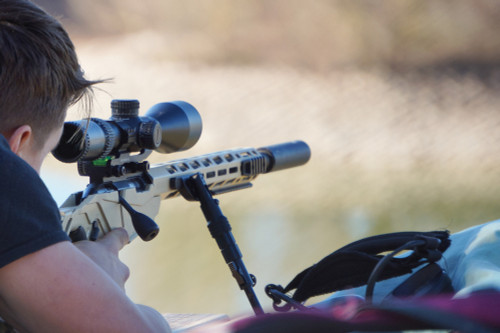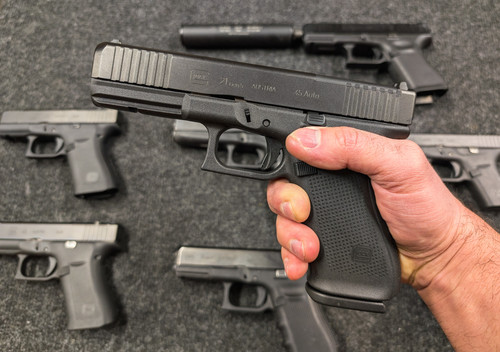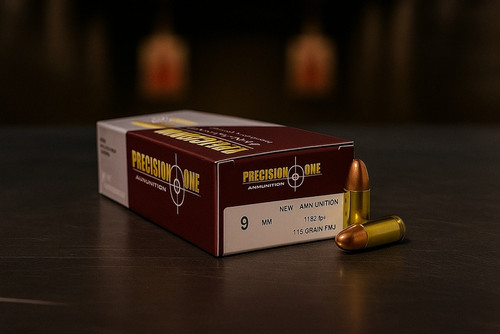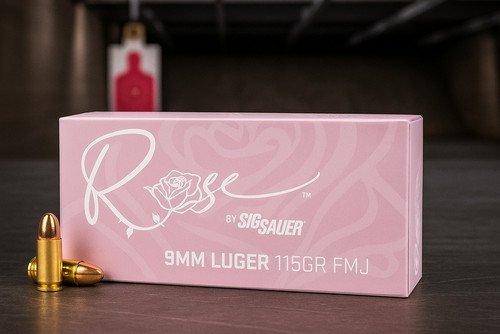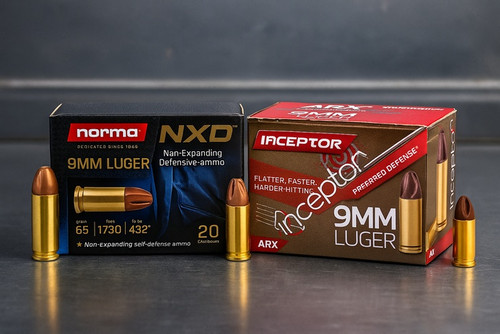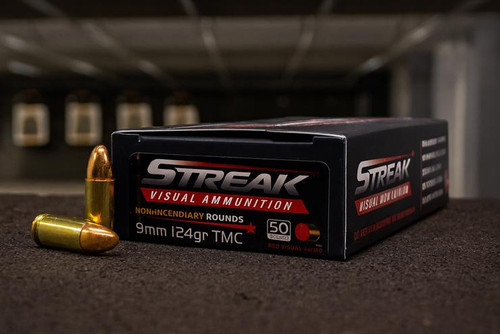Quick Answer
Finding the right scope mount keeps your optic straight, steady, and at the right height for eye relief and cheek weld. For rings, strong picks include Vortex Precision Matched, Nightforce Ultralite, Burris XTR Signature, Warne Maxima, and Leupold Dual Dovetail. For one-piece mounts, look at Spuhr QDP, Aero Ultralight, Burris P.E.P.R., American Defense AD-RECON, and Scalarworks LEAP. Match your rail type, tube size, and needed height for best results.
Key Takeaways
- Rings are lighter; mounts add offset, rigidity, and QD options.
- Match rail type, tube size, ring height, and torque specs.
- Cantilever helps AR eye relief with LPVOs.
- QD aids optic swaps; always verify return-to-zero.
- Follow torque specs to protect scope tubes.
A solid rifle, quality ammo, and well-made glass can't deliver accuracy without proper mounting hardware. The connection between your scope and firearm is critical - cheap or improperly installed mounts lead to shifting zeros, damaged optics, and frustration at the range. This guide breaks down the best scope mounts and rings across categories and price points. It helps you select the right option for your specific setup and needs.
How We Chose the Best Scope Mounts & Rings
Choosing good mounts and rings means looking past ads and focusing on what matters. We checked machining quality, tight tolerance specs, and stiffness—traits that protect your zero. We also tested fit across tube diameters, heights, and rail systems to cover common rifle setups.
Price isn't always an indicator of quality, so we included options across budgets that still maintain proper standards. The mounting interface between scope and rifle forms a critical link in the accuracy chain—one that's often overlooked until things go wrong. Scope mounts have evolved significantly over decades, from simple dovetail designs to modern quick-detach systems built on standardized rails.
As firearms have become more precise, so too have the mounting systems that hold our optics. The goal remains consistent: maintain a rigid, repeatable connection that keeps zero through recoil, transport, and field use.
6 Best Scope Mounts
American Defense AD-RECON (QD Cantilever Mount)
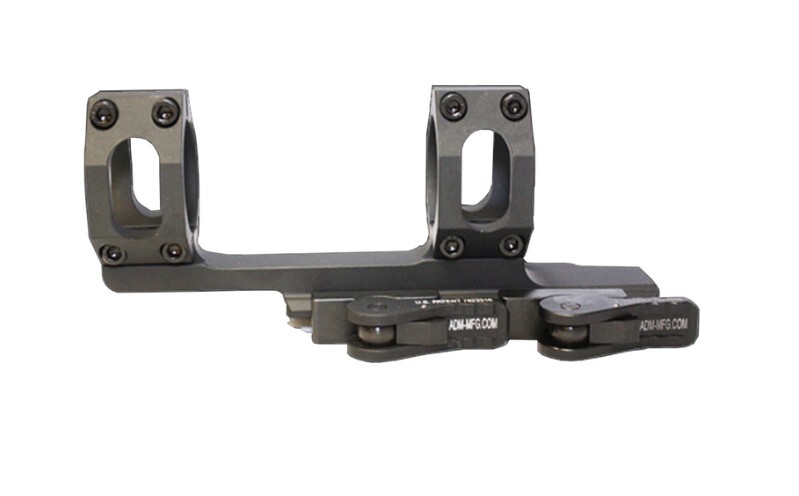
The AD-RECON brings a proven Auto-Lock™ lever to quick-detach use on civilian rifles. This QD cantilever mount returns to zero well when you place it in the same rail slot, so you can remove and reinstall your optic with confidence.
It uses 6061-T6 aluminum with a hard-coat finish to balance strength and weight. The forward offset (about 2 inches) helps set eye relief on AR platforms and so it solves a frequent problem on flat-top rifles.
A wide clamp face grips the rail firmly. It holds steady even under stout recoil. The tool-less QD system lets you swap optics or reach backup sights fast and simply, which helps when you need flexibility without giving up precision.
Price: $175-$240 depending on configuration
Features
- Material: 6061-T6 aluminum with Hard Coat Type III anodizing
- Ring sizes available: 1", 30mm, and 34mm
- Recoil-proof QD design with adjustable tension
Pros
- Fast removal/installation with excellent zero repeatability
- Perfect eye relief positioning on AR-type rifles
- Functions with both in-spec and slightly out-of-spec rails
Cons
- Heavier than fixed ultralight mounts
- Setup requires careful lever tension adjustment
- Premium price point compared to basic mounts
Burris AR-P.E.P.R.

The Burris P.E.P.R. (Proper Eye Position Ready) has earned its place as a staple in the AR optics world. This cantilever mount pushes your scope forward 2 inches to create ideal eye relief on flat-top receivers, a crucial feature when running LPVOs or other magnified optics on ARs.
The P.E.P.R. stands out with dual-top ring caps—smooth caps plus Picatinny-top caps. This setup lets you add a micro red dot or a laser right on the mount. You get a modular feel without extra rail parts on the handguard.
The mount's six-screw ring caps ensure your scope stays locked in position through heavy recoil and rough handling. Available in standard or QD versions, the P.E.P.R. gives you options based on your needs for weight, simplicity, or quick removal capability.
Price: $150-200
Features
- Aluminum body with six screws per ring
- Includes both Picatinny rail tops and smooth tops
- Available for 1", 30mm, and 34mm scope tubes
Pros
- Excellent value for the features included
- Top rails allow for backup sight or accessory mounting
- Rugged design handles heavy recoil
Cons
- Heavier than minimalist mounts (~8.7 oz for the non-QD model)
- Bulkier profile than sleeker tactical options
- QD version costs significantly more than standard
Aero Precision Ultralight (30mm, Extended)
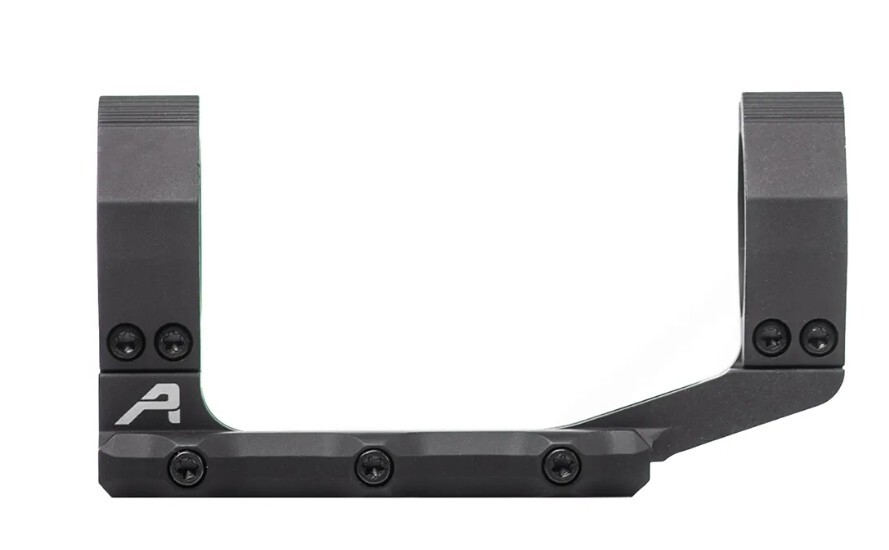
The Aero Ultralight earns its name by cutting weight where it counts. At about 3.27 ounces for the 30mm Extended, it is one of the lightest cantilever mounts that still holds firm.
Its ring shape keeps strength with less material, which helps on rifles where every ounce matters. The Extended version sets the rear ring ~1″ forward of the base’s rear surface (effective ~1″ forward offset), easing eye-relief on ARs.
Made in the USA from 6061-T6 aluminum with a hard-coat finish, the Ultralight delivers pro-grade build at a fair price. The clean look fits modern builds without bulk or loud styling.
Price: $80.50 - US $115
Features
- 6061-T6 aluminum with hard-coat anodizing
- Available in 1" and 30mm tube diameters
- Multiple height options to match your setup
Pros
- Exceptional weight savings without compromising strength
- Clean, low-profile appearance
- Good value for American-made quality
Cons
- Not QD; requires tools for installation/removal
- Requires careful torque pattern when mounting
- Limited color options (typically black only)
Scalarworks LEAP (Red-Dot/Scope LEAP Series)
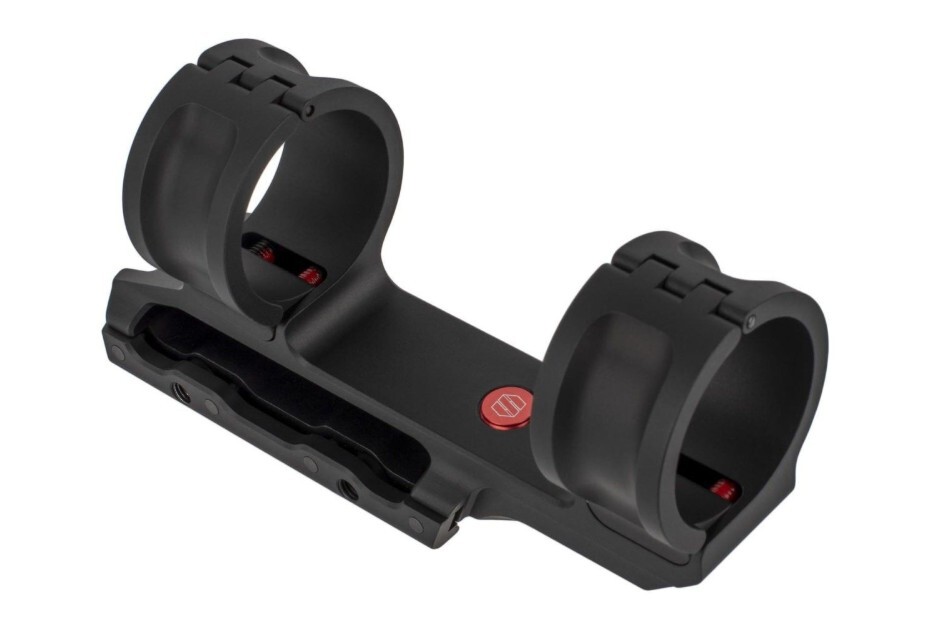
The Scalarworks LEAP line made waves with a lean design and the ClickDrive™ QD system. These mounts trim every extra gram yet stay strong and stiff—smart work by the design team.
What sets the LEAP apart is its completely tool-less design. The ClickDrive™ QD mechanism requires just a simple push and 90° turn to operate, yet provides rock-solid lockup. Return-to-zero performance is excellent. It is ideal for those who need to remove optics regularly without losing their sight picture.
The LEAP's skeletonized profile isn't just about weight savings—it also eliminates snag points and reduces overall bulk. Available for popular red dots like the Aimpoint T-2 and Trijicon RMR, plus a scope mount series for 30mm tubes, the LEAP system covers most modern optic needs with the same attention to refined detail.
Price: $159 for a mount variant.
Features
- Machined from 7075-T6 aluminum with optimized geometry
- Return-to-zero QD design
- Available in lower 1/3, absolute co-witness, and 1.93" heights
Pros
- Incredibly light with repeatable QD functionality
- Clean aesthetics with superb machining quality
- Self-adjusting tension system
Cons
- Premium price point
- Limited to supported footprints and heights
- Minimal surface area on rail may not suit all preferences
Vortex Sport Cantilever Mount
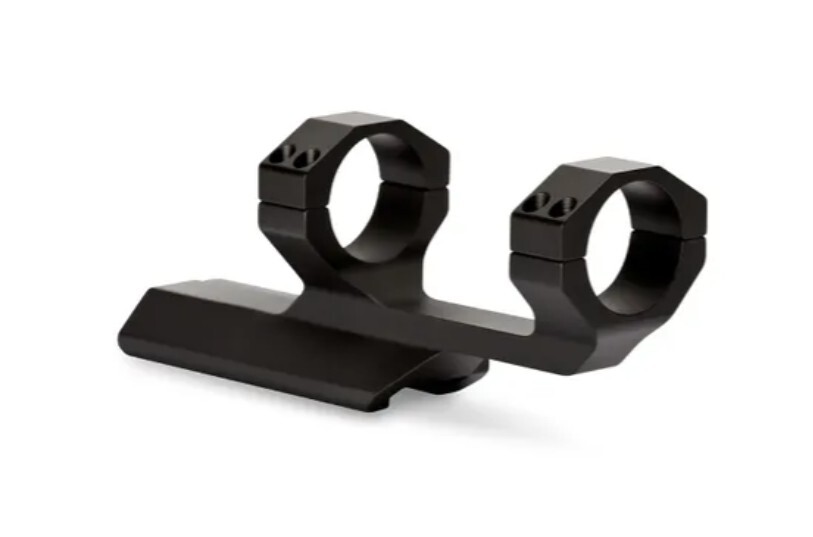
The Vortex Sport Cantilever mount delivers solid performance without breaking the bank. This workhorse mount places your scope at the ideal height for AR platforms (approximately 1.59" optical center height) and provides the forward offset needed for proper eye relief.
Built from a single piece of aluminum, the Sport Cantilever eliminates any concerns about alignment between separate rings. The streamlined design offers clean lines without unnecessary bulk and so it makes a good match for both tactical and hunting applications.
Available in both 1" and 30mm versions with either 2" or 3" offsets, the Sport Cantilever accommodates different scope lengths and eye relief needs. The included Torx tool and hardware make installation straightforward even for those new to mounting optics.
Price: $90-$124
Features
- One-piece construction with AR-friendly height
- Four screws per ring for secure grip
- Matte black finish to reduce glare
Pros
- Solid value from a respected optics company
- Easy to find and widely compatible
- Good balance of weight, strength, and cost
Cons
- Heavier than ultralight specialty mounts
- Not a quick-detach design
- Basic feature set compared to premium options
Spuhr QDP (ISMS QD Line)
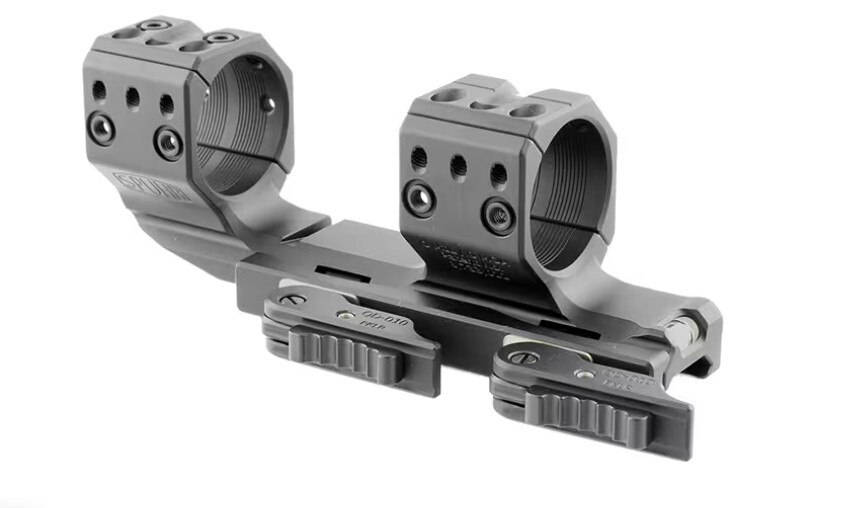
The Spuhr QDP scope mount represents the pinnacle of precision rifle mounting technology. Part of Spuhr's Ideal Scope Mounting System (ISMS), this Swedish-designed mount is machined from a single billet of aluminum to exacting tolerances. For this reason it creates a perfect alignment without the need for lapping.
What truly sets the Spuhr apart is its thoughtful engineering. The 45-degree ring screw layout opens access to scope turrets while holding tight. Built-in accessory points let you add backup sights, a red dot, or a laser on the mount itself—so you get a tidy, integrated setup.
The QDP adds quick-detach for tool-less on/off with strong return-to-zero. You will often see this mount on high-end precision rigs, duty rifles, and match guns where absolute consistency earns its higher price.
Price: $400-$500
Features
- CNC-machined from a single aluminum billet
- 45° fastener orientation for better turret access
- Built-in bubble level on many models
Pros
- Among the most robust and precise QD mounts available
- Outstanding accessory ecosystem
- Perfect machining eliminates alignment issues
Cons
- Very expensive compared to standard options
- Heavier than ultralight competition mounts
- Overkill for casual range use or budget builds
6 Best Scope Rings
Nightforce X-Treme Duty Ultralite Rings
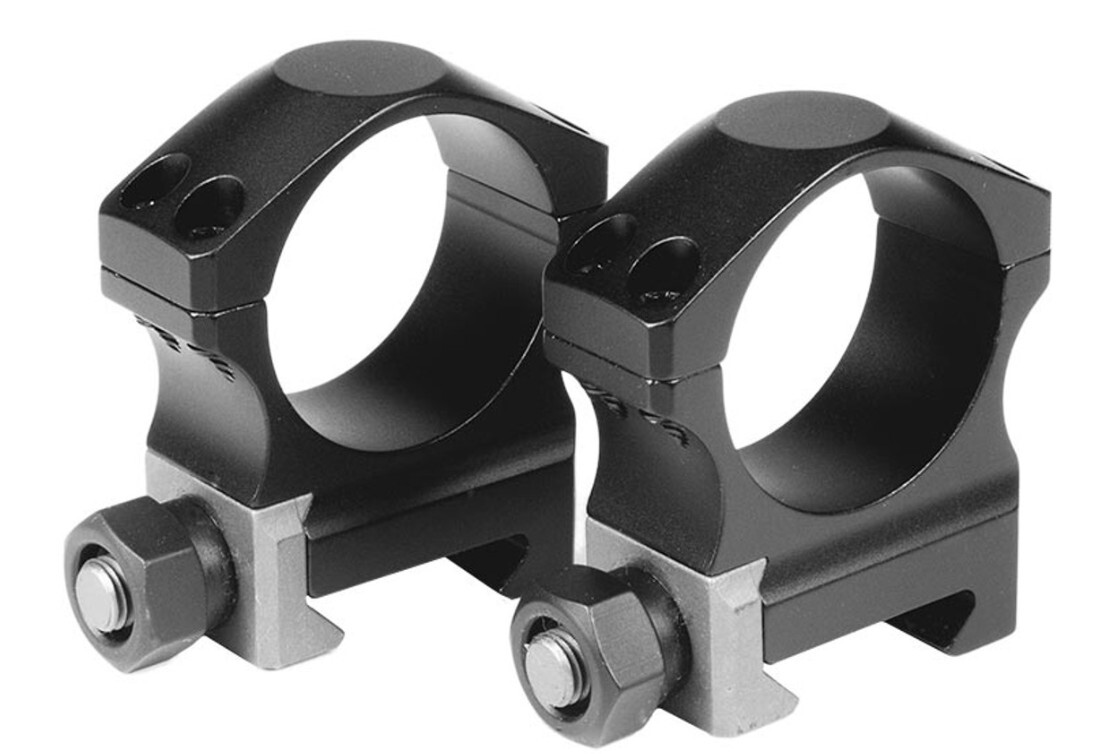
Nightforce's X-Treme Duty Ultralite rings represent an ideal fusion of strength and weight savings. These hybrid rings use 7075-T6 aluminum bodies combined with titanium crossbolts and jaws to deliver steel-like strength at roughly half the weight. This is a significant advantage for hunters and precision shooters who count ounces.
The hybrid design uses 7075-T6 aluminum ring bodies with titanium cross-bolts/jaws to maximize strength while minimizing weight, and the precision machining provides excellent alignment without lapping in most setups.
Why: Nightforce describes the Ultralite construction (aluminum bodies + titanium hardware) but does not market a “zero-gap” design.
. This attention to detail has made these rings popular for high-recoil magnum rifles where lesser rings often fail or shift.
Available in both four-screw and six-screw versions, the Ultralite rings offer options based on your needs for clamping force versus weight savings. The six-screw version provides maximum security for heavy optics or hard-recoiling rifles, while the four-screw variant shaves a few more grams for weight-critical builds.
Price: $190-$215
Features
- Hard-anodized finish for durability
- Zero-gap precision machining for perfect alignment
- No lapping required for most setups
Pros
- Excellent strength-to-weight ratio
- Trusted on magnum rifles and precision platforms
- Perfect alignment eliminates scope stress
Cons
- Premium price point
- Limited finish options (typically black only)
- Requires proper torque application during installation
Leupold Dual Dovetail Rings (DD Series)
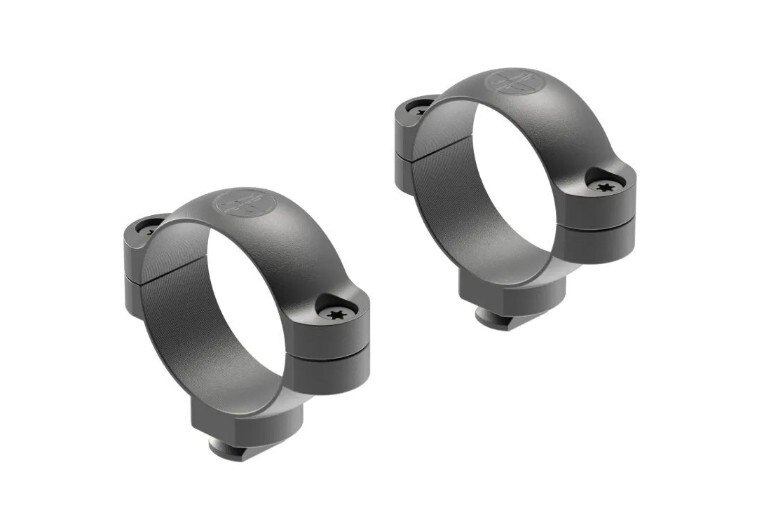
Leupold Dual Dovetail rings refine a classic setup used by many hunters for years. The twist-lock steel rings sit low and clean on dual dovetail bases, It gives a solid mount close to the bore.
Simplicity is part of the appeal. Once the bases are on, place the rings, rotate 90 degrees to lock, and you are set. This proven system holds against recoil without extra weight or needless parts.
Available in multiple heights and tube diameters (1", 30mm, and even 35mm for some models), the DD rings accommodate virtually any scope and rifle combination. The clean lines and classic styling complement traditional hunting rifles particularly well. It makes these a natural choice for bolt action enthusiasts.
Price: $34.99
Features
- Tool-less twist-and-lock design
- Matte or gloss finish options
- Requires Leupold Dual Dovetail (DD) bases; not compatible with STD windage-adjustable rear bases.
Pros
- Rugged, time-proven design
- Clean, low-profile appearance
- Excellent for traditional hunting setups
Cons
- Requires specific DD bases; not for Picatinny rails
- Less flexible for frequent optic swaps
- Limited to fixed cant of the base
Burris XTR Signature Rings
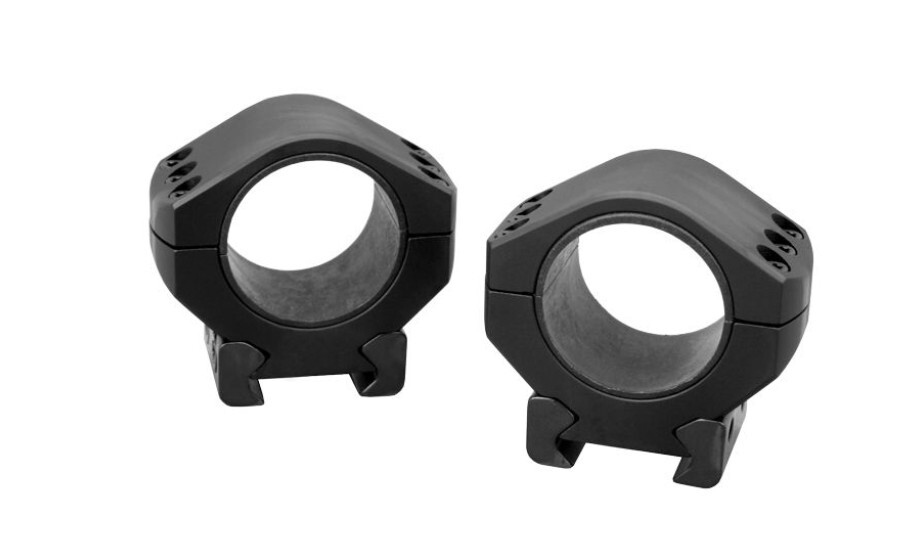
The Burris XTR Signature rings represent one of the most innovative mounting solutions on the market with their unique Pos-Align® insert system. They include Pos-Align® inserts in 0, ±5, ±10, and two sets of ±20 MOA, allowing up to 40 MOA of elevation cant via the inserts alone, without special bases or tapered rings. It is a must for long-range shooters who need extra elevation travel from their scopes.
The polymer inserts that make this system work also provide stress-free mounting by creating a perfect, self-centering fit around your scope tube. This eliminates point-of-impact shifts caused by uneven tension and protects your scope's finish from marring—two common issues with traditional rings.
The XTR Signature rings use an aluminum body with dual steel rail clamps for a strong bite on Picatinny rails. With six screws per ring, clamping force spreads evenly around the scope tube, which helps stop slip under heavy recoil.
Price: $129.59
Features
- No lapping required; inserts create perfect tube contact
- Horizontal split with six-screw caps
- Available in multiple heights and tube diameters
Pros
- Massive adjustment range for long-range shooting
- Protects scope finish and eliminates stress points
- Corrects misaligned bases without gunsmithing
Cons
- Installation is more involved than basic rings
- Heavier than minimalist hunting rings
- Some models may not fit certain Weaver rails properly
Vortex Pro Series Rings
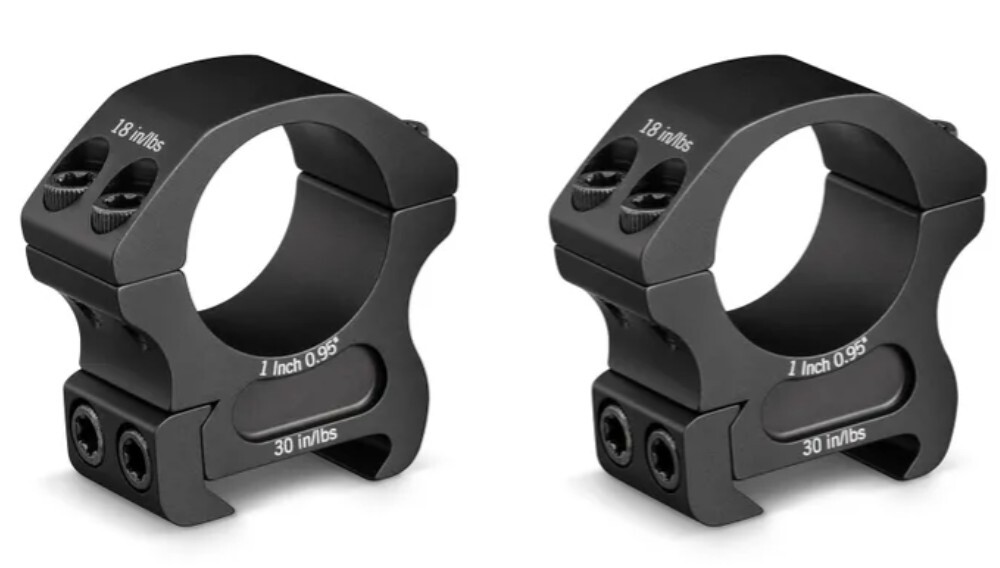
Vortex Pro Series rings are machined from 6061-T6 aluminum, include laser-engraved torque values, and use an integrated recoil lug; they fit both Picatinny and Weaver rails.
One handy touch stands out: the laser-engraved torque specs on the rings. That small guide helps you avoid over-tightening. The integrated recoil lug stops front-to-back movement under recoil. You don’t need separate lug pieces that can go missing during setup.
The Pro Series rings fit both Picatinny and Weaver rails, so mounting is easy across many systems. They come in multiple heights and tube diameters. You’ll find a match for nearly any rifle and scope combo without stretching the budget.
Price: $119.99
Features
- Integrated recoil lug prevents shifting
- Multiple heights and tube diameters available
- Four screws per ring for secure mounting
Pros
- Excellent value for the quality provided
- Simple, dependable design
- Broad compatibility with different rail types
Cons
- Not as light as premium ultralight options
- Fewer premium features than flagship lines
- Limited finish options (typically matte black)
Warne Maxima (Horizontal) Rings

Warne Maxima rings have earned a reputation for bomb-proof durability and no-nonsense performance. These steel, horizontally-split rings provide exceptional holding power for demanding applications where aluminum rings might not be sufficient—such as heavy-recoiling magnums or hard-use hunting rifles.
The horizontal split design provides better grip on the scope tube than vertical splits. It distributes clamping force more evenly. Warne's square recoil key (integrated lug) creates positive engagement with your rail. It prevents any movement under recoil without additional parts to keep track of.
Made in America and backed by a lifetime warranty, the Maxima rings represent an excellent compromise between premium features and reasonable cost. They're frequently recommended by gunsmiths for clients who need a rock-solid mount without extreme weight savings or special features.
Price: $73.99 USD - $91.99
Features
- Square recoil key to prevent movement
- Multiple heights and tube sizes available
- Made in the USA
Pros
- Exceptionally durable; nearly indestructible
- Widely available at most retailers
- Ideal for heavy-recoil applications
Cons
- Heavier than aluminum rings
- Requires tools for installation/removal
- Basic feature set compared to premium options
Vortex Precision Matched Rings
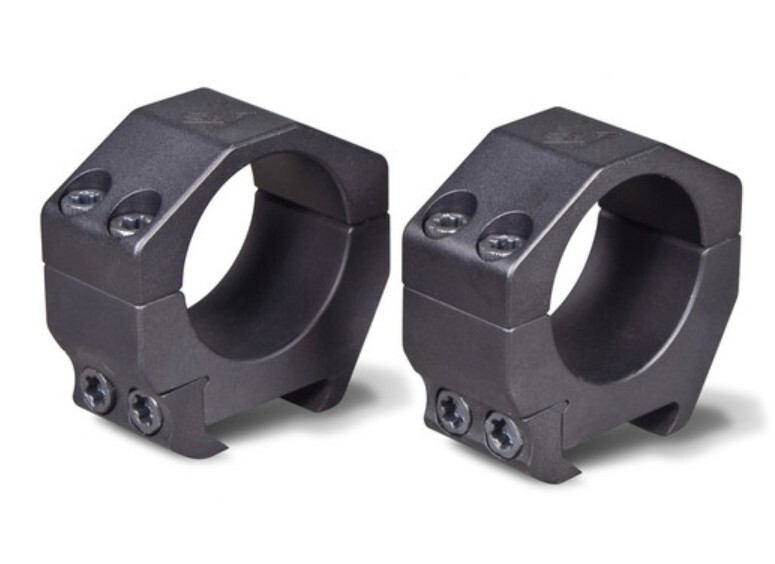
Vortex Precision Matched rings represent the pinnacle of ring technology for serious precision shooters. CNC machined in the USA from 7075-T6 billet aluminum, these rings are held to extremely tight tolerances (±0.0005") and kept as matched pairs throughout the manufacturing process to ensure perfect alignment.
The careful build shows in every part of these rings. Grade 8 fasteners give strong clamping force without stripping. The anti-snag shape removes sharp edges that might catch on gear or brush. The Type III hard-coat anodizing guards against scratches and corrosion in rough field use.
These rings are common on long-range match rigs and precision hunting builds that demand repeatable results. Tight machining often removes the need for lapping. That saves setup time and protects both rings and scope.
Price: $150-$180 per pair
Features
- Matched and serialized pairs for perfect alignment
- Multiple diameters and heights available
- Designed specifically for precision shooting
Pros
- Exceptional concentricity and alignment
- Often eliminates need for lapping
- Lifetime warranty from Vortex
Cons
- Higher cost than general-purpose rings
- Picatinny-only on many models
- Overkill for casual or recreational use
Rings vs Mounts: Which Should You Choose?
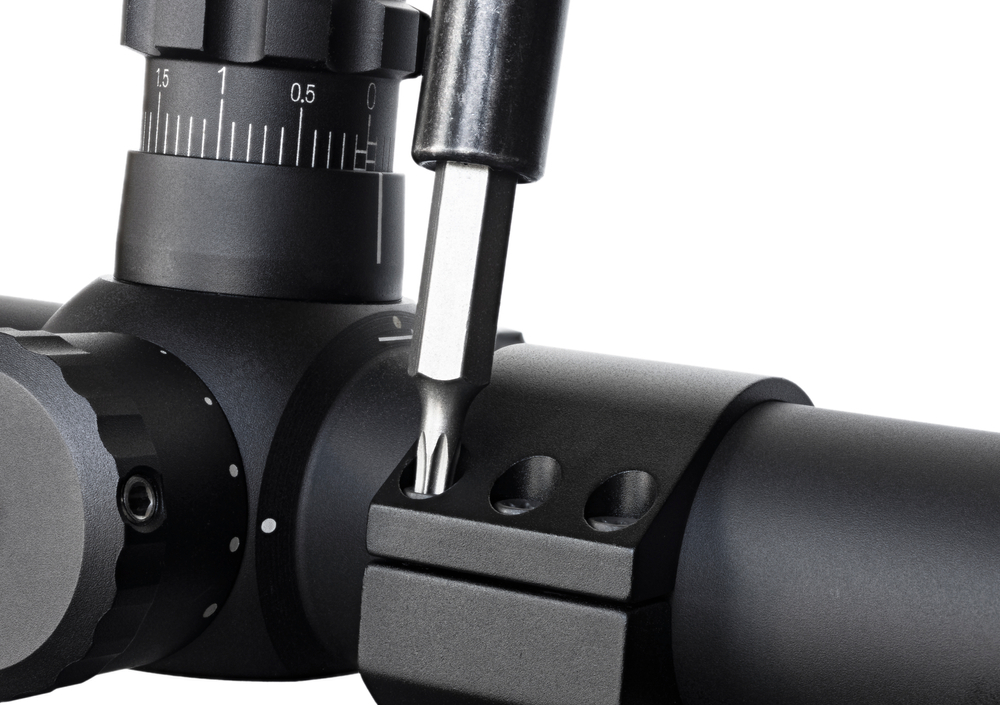
Choosing between rings and one-piece mounts comes down to your specific needs and rifle setup. Let's break it down to help you decide what's best for your situation.
Rings work great for bolt action rifles, offer minimal height over bore, and typically weigh less than one-piece mounts. They also tend to have a more classic look that complements traditional hunting rifles. If keeping weight down is your priority, quality rings often win out.
One-piece mounts shine on AR-platform rifles where eye relief is tricky. The cantilever design pushes the scope forward for proper positioning without mounting on the handguard. They also add rigidity that can be helpful for precision shooting and often include features like built-in cant for long-range work.
Start your decision-making process by checking what rail system your rifle has, then match the tube diameter of your scope. Next, consider clearance for your objective lens and your specific use case. Finally, decide if quick-detach functionality matters to you. This methodical approach will narrow your options quickly.
Mount & Base Types (Know Your Interface)
Understanding the different mounting systems prevents costly compatibility mistakes. Research conducted on various scope mounting designs shows how each type offers distinct advantages depending on the firearm platform and intended use.
Picatinny (MIL-STD-1913) rails have 0.206″ slot width and standardized spacing; Weaver slots are ~0.180″ and spacing is not standardized—hence some cross-fit issues.
Dovetail mounts create a low-profile connection common on rimfire rifles and older centerfire models. The inverted trapezoid shape secures the mount without screws along the top. It creates a clean look with minimal height over bore.
Integral receivers have mounting points machined directly into the action—common on many bolt rifles. These eliminate the need for a separate base. It reduces stack height and potential points of failure.
Cantilever mounts extend forward from the receiver. It places the scope in the ideal eye relief position for AR platforms. This design solves the eye relief problem created by the AR's charging handle position.
Some mounts include built-in MOA (typically 20 MOA), which tilts the scope downward at the rear. This gives you more elevation adjustment for long-range shooting without using shims or specialized bases.
For LPVOs you’ll want a sturdy mount that preserves zero under recoil and allows quick detachment. See our LPVO recommendations in Best LPVO Scopes to match the optic to the mount and ring height you choose.
Height & Eye Relief
| Objective Lens | Typical Ring Height | Notes |
|---|---|---|
| ≤40 mm | Low | Lowest viable — improves cheek weld. |
| 42–45 mm | Medium | Clears standard receiver/contour geometry without excessive rise. |
| ≥50 mm | High | Higher rings prevent bell/barrel contact and allow larger objective clearance. |
Choosing the right ring height involves more than just clearing the barrel. You need to account for your specific barrel contour, the rail height itself, flip-up scope caps if used, and your personal cheek weld preference.
Ring height affects both comfort and accuracy. Too high, and you'll struggle to get a consistent cheek weld. Too low, and your objective bell might contact the barrel or handguard. The sweet spot is the lowest height that allows proper clearance.
AR-platform rifles typically need higher mounts due to their straight-line design. The goal is to align your eye naturally with the scope when you shoulder the rifle. Many AR-specific mounts place the scope center approximately 1.5" above the rail. It creates a comfortable alignment with the standard AR stock comb.
For traditional rifles with dropped combs, lower rings often work better. This is why many hunting rifles use low or medium rings. It keeps the scope close to the bore axis for natural alignment.
Ring height affects eye relief and cheek weld — pick rings that give proper clearance without forcing an awkward head position. After mounting, follow the steps in How to Sight a Scope to confirm your eye box and zero are correct.
What About QD?
Quick-detach mounts are popular for good reasons. They add flexibility without a big tradeoff in performance. For many, that matters.
Here are the gains: QD lets you pull a scope fast for transport, swap day and night optics, or get to backup iron sights in a pinch. In some setups, that’s a real benefit.
Now the tradeoffs. QD systems add cost, weight, and moving parts. They also add one more place where something can fail. On a hunting rifle that rarely needs the scope removed, the gains may not outweigh the extra bits.
If you choose QD, follow the golden rule: mount to the same rail slot every time. Even top QD designs can show small zero shifts between different slots. Therefore consistent mounting is key for keeping precision across range sessions.
Before you trust any QD mount for critical use, test its return-to-zero at the range. Remove and reinstall the mount several times, then check for point-of-impact change. Good QD mounts should show little shift—about 1 MOA or less—when used the right way.
How To: Mount a Scope Correctly
Proper scope mounting drives accuracy and smooth use. Follow these steps for best results:
- Gather proper tools: You’ll need an inch-pound torque wrench, a bubble level kit, and thread prep (Loctite 242 or similar if the maker calls for it).
- Prepare the surfaces: Clean all mounting surfaces with denatured alcohol. Remove oil and debris from the rail, rings, and scope tube.
- Install the base/rings: Set the mount or rings on your rail, push forward into the recoil slot, and torque to the maker’s specs (typically 15–18 in-lbs for ring screws and 30–65 in-lbs for base screws).
- Set eye relief: With the bottom halves installed, place the scope. Slide it fore and aft for eye relief at max magnification, then level the reticle with your bubble level.
- Secure the scope: Install top caps and tighten in a cross pattern. Step the torque up in small passes until you hit spec. That stops the scope from twisting during install.
- Final checks: Confirm clearances, function, and level. Make sure the scope doesn’t touch the barrel or handguard. Check that zoom and focus rings move freely.
- Test fire: After mounting, run a box test to confirm tracking. Recheck all screws after 20–30 rounds, since early firing can loosen fasteners.
Buyer's Checklist
Use this checklist when shopping for scope mounts to avoid costly mistakes:
Rail match: Confirm if you have Picatinny, Weaver, dovetail, or integral bases
Tube size: Verify your scope tube diameter (1", 30mm, or 34mm)
Height needed: Measure clearance for your objective lens and barrel
Platform requirements: Consider AR cantilever needs vs. traditional rings
Feature priorities: Decide if QD, built-in MOA, or accessory rails matter to you
Torque tools: Ensure you have the proper tools for installation
Brand support: Check warranty and customer service reputation
Taking time to verify these details before purchasing saves headaches down the road. Many mounting problems stem from basic incompatibility issues that could have been avoided with proper research.
Conclusion
Your scope is only as good as the mount that holds it. Even the most expensive glass won't perform if it's sitting on shaky foundations. Quality mounts and rings might not be the flashiest part of your setup, but they're absolutely critical to consistent accuracy and long-term performance.
Take the time to match your mounting system to your specific needs. Pay attention to rail type, tube diameter, height requirements, and torque specs. These small details make a huge difference downrange. A proper mount lets you focus on your shooting instead of worrying about shifting zeros or damaged optics.
Remember that saving a few bucks on mounting hardware often costs more in the long run—through missed shots, damaged scopes, or frustrating troubleshooting. Invest in quality mounts or rings that suit your platform and shooting style. Your future self will thank you when you're stacking tight groups instead of chasing wandering zeros. After all, what good is precision ammunition and a match-grade barrel if your scope can't hold steady?
Frequently Asked Questions (FAQs)
Are mounts and rings the same thing?
No. Rings clamp to your scope tube. Mounts are one-piece units that include the ring halves. Many mounts add extras like cantilever offsets or quick-detach systems that simple rings do not offer.
Will Picatinny rings fit my Weaver rail?
Usually yes. Picatinny (MIL-STD-1913) has wider slots than Weaver, so Picatinny rings often fit Weaver bases. But Weaver rings may not fit Picatinny rails because the recoil lug is narrower. When in doubt, match ring type to rail type.
Do I need to lap my rings?
High-quality matched rings from reputable makers rarely need lapping. Follow the maker’s guidance—some warranties do not cover lapped rings. If you do lap, use the right tools and slow, even strokes to avoid damage.
What torque settings should I use?
Always follow the maker’s specs. In general, ring screws run about 15–25 inch-pounds, and base screws may range from 30–65 inch-pounds. Do not over-torque. Too much force can strip threads or crush a scope tube.
Is quick-detach (QD) worth the extra cost?
For most casual range users, probably not. QD helps if you swap optics often or need fast access to backup sights. Otherwise, standard mounts give strong value and fewer possible failure points.
How do I choose the right ring height?
Pick the lowest height that clears the objective bell over the barrel or handguard. Check cap clearance as well. Aim for a comfortable cheek weld with your stock.
Should I get a cantilever mount for my AR?
Yes, if your scope needs more eye relief. A cantilever mount pushes the optic forward, so you get proper eye position without using the handguard, which could hurt accuracy.
About the Author
This article was written by the Pro Armory writing team based on current research, including studies from reputable sources like the Journal of Military Science, Firearms News, and the National Shooting Sports Foundation. We also referenced trusted information from official defense publications and respected firearm authorities such as the ATF, NRA, and manufacturer manuals.
Disclaimer: This information is for education. Always follow manufacturer directions when mounting optics. Wrong installation can damage gear or create unsafe conditions. Check function at the range before any field use.




 Pro Armory Editorial Team
Pro Armory Editorial Team